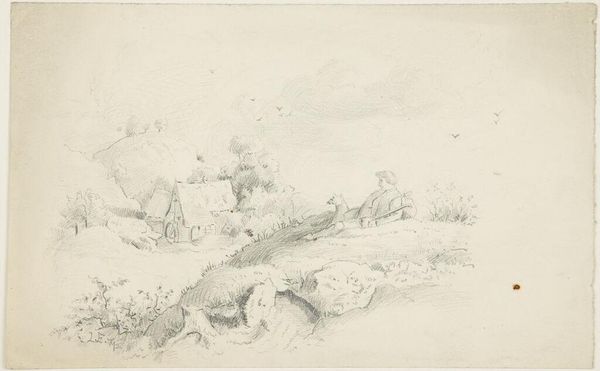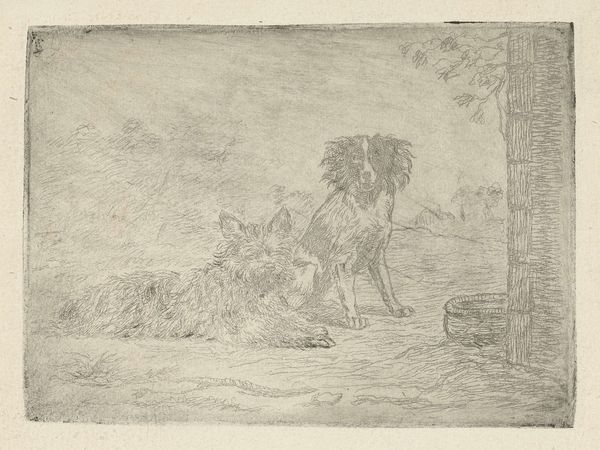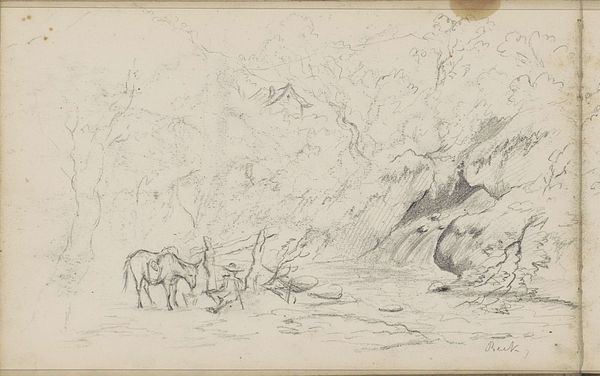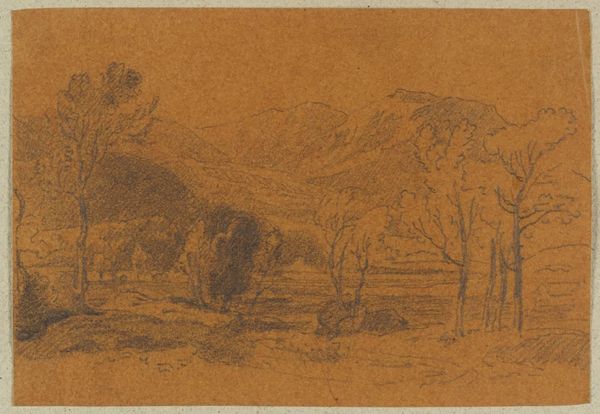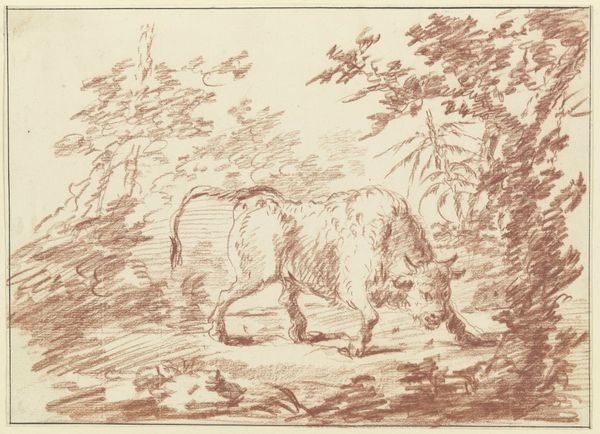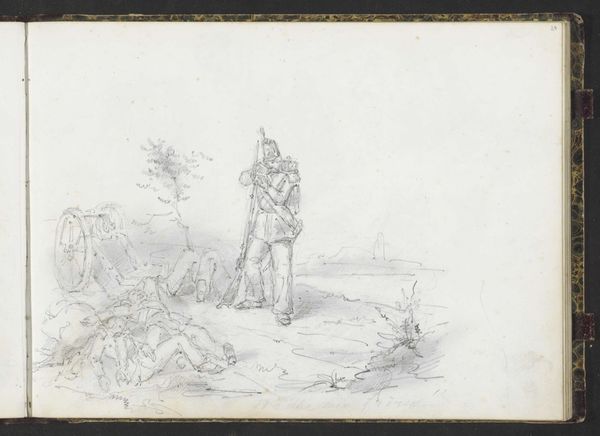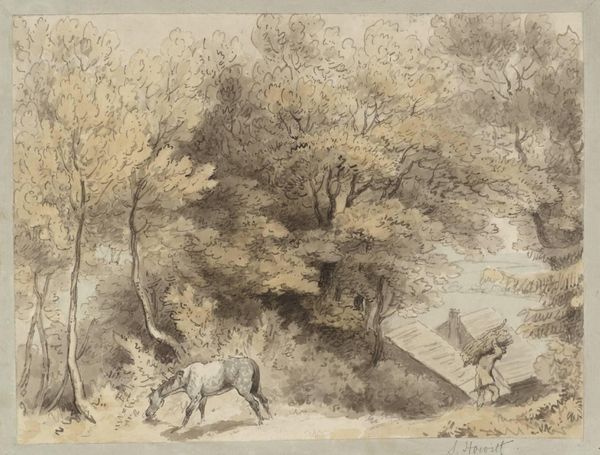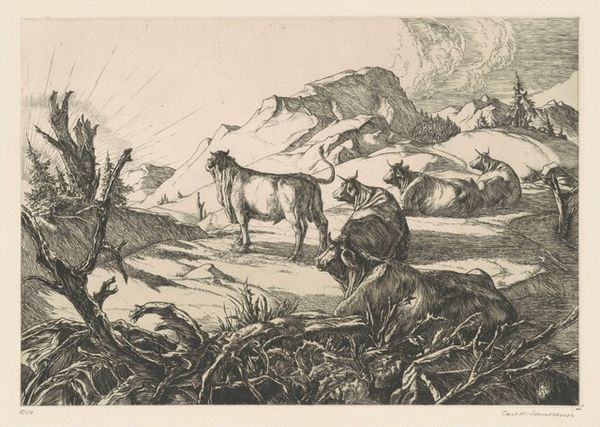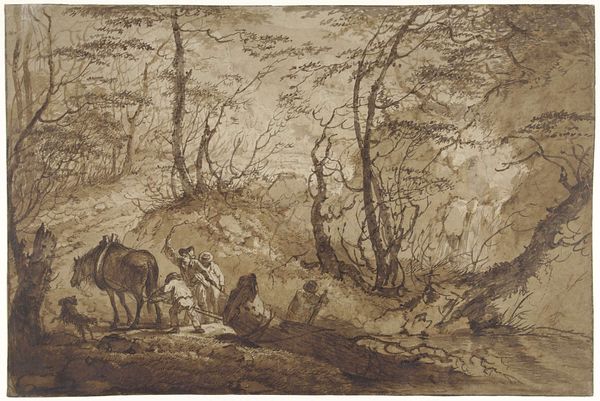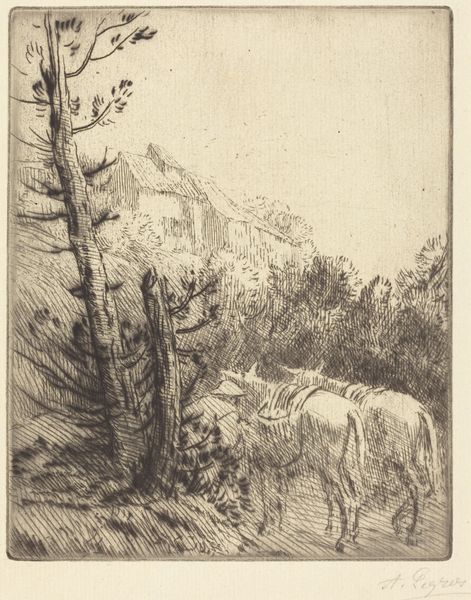
drawing, pencil
#
drawing
#
dutch-golden-age
#
pencil sketch
#
landscape
#
pencil
#
genre-painting
#
realism
Dimensions: height 218 mm, width 366 mm
Copyright: Rijks Museum: Open Domain
Curator: Jacob Maris' "Ossenwagen op bergweg," likely created between 1847 and 1910, is a compelling drawing housed here at the Rijksmuseum. Editor: My first impression? Somber, even bleak. It feels unfinished, a fleeting moment captured in pencil dust and shadow. Makes me think of journeys and toil. Curator: Indeed. Maris' adeptness with line is evident here. The composition is carefully arranged, with the ox-drawn cart acting as a central axis, dividing the space while drawing the viewer’s gaze upward, following the implied path. Editor: It's fascinating how much emotion he conveys with so few lines. Look at the stoop of that figure guiding the oxen—you can feel the weight, the effort of their climb. He really distills the essence of labor into these subtle details. It's poetic almost, in its austerity. Curator: Semiotically, we could interpret the "bergweg," or mountain road, as a metaphor for the challenges of life. Maris often explores the themes of labor and the human relationship with nature through landscapes. Notice also the strategic use of shading. Light doesn’t serve only to illuminate but to accentuate mood and to sculpt form, which directs our eye through the composition. Editor: I’m struck by the raw honesty. This isn't a romanticized view of rural life; it is down-to-earth. The blurred effect adds a kind of visual echo, giving the feeling of relentless motion or repetition—this arduous journey repeating itself endlessly. The choice of medium itself supports that vision—pencil is immediate, less precious than oil or paint. Curator: Considering that, we must also regard it within the context of Realism. The subject matter aligns with this movement’s focus on everyday life. But I agree; the almost ethereal handling makes it something other than just objective rendering. Editor: The overall experience evokes the human-animal-environment triangle—that ancient struggle and symbiosis—drawn together in pencil and memory. You look at this and feel both admiration and exhaustion. It hits something profound. Curator: It is these tensions that contribute to its power. Well, it's been a pleasure delving into this with you. I appreciate your perspective. Editor: Absolutely, such conversations allow for diverse appreciation. It gives fresh eyes a way to interpret old pieces.
Comments
No comments
Be the first to comment and join the conversation on the ultimate creative platform.
